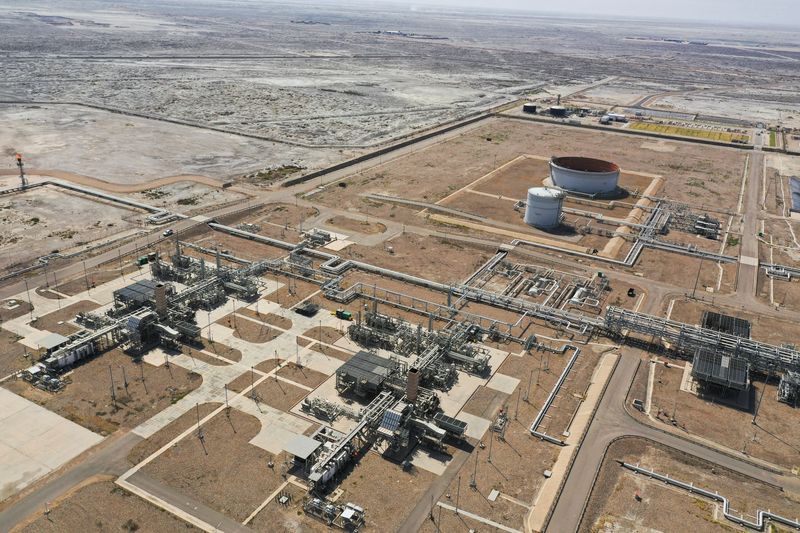
©Reuters. FILE PHOTO: An aerial view shows the Majnoon oil field near Basra, Iraq, May 12, 2023. REUTERS/Essam Al-Sudani/File Photo
By Florence Tan
SINGAPORE (Reuters) – Oil prices fell on Friday on the possibility of a ceasefire in Gaza that could ease geopolitical concerns in the Middle East, while a strengthening dollar and faltering U.S. gasoline demand also weighed on prices.
Futures fell 53 cents, or 0.6%, to $85.25 a barrel at 0651 GMT. futures lost 52 cents, or 0.6%, to 80.55 dollars a barrel.
Both contracts are set to end the week unchanged or slightly lower after rising more than 3% last week.
Oil traded lower on news of a draft United Nations resolution calling for a ceasefire in Gaza and as another round of profit-taking began, IG analyst Tony Sycamore said.
“A ceasefire would help calm fears that the situation in Gaza could spread more widely across the region,” he said. “Furthermore, it could encourage the Houthis to retreat and allow oil tankers to pass through the Red Sea, which would also be a positive development in terms of helping to balance supply and demand dynamics.”
US Secretary of State Antony Blinken said on Thursday he believed talks in Qatar could reach a ceasefire agreement for Gaza between Israel and Hamas.
Blinken met with Arab foreign ministers and Egyptian President Abdel Fattah El-Sisi in Cairo while negotiators in Qatar focused on a truce of about six weeks.
In the United States, the world’s top oil consumer, gasoline supplies, a gauge of demand, fell below 9 million barrels for the first time in three weeks, indicating a possible slowdown in crude demand.
However, consultancy FGE said preliminary weekly data for the first half of March showing inventories of crude oil and major products onshore at major oil hubs globally fell by nearly 12 million barrels, compared to the average draw of 6 million barrels from 2015 to 2019, could be bullish for oil.
Meanwhile, the US dollar, which trades inversely to oil prices, strengthened after the Swiss National Bank’s surprise interest rate cut boosted global risk appetite.
A stronger dollar makes oil more expensive for investors holding other currencies, curbing demand.